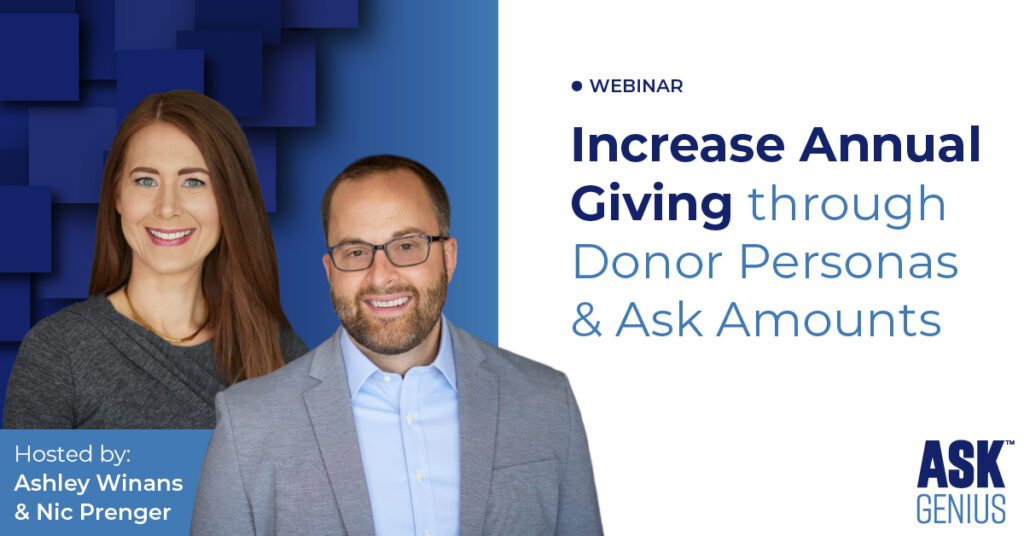Fundraisers know that communicating with donors is critical for fundraising success. However, as databases grow, optimizing for donor segmentation fundraising can become overwhelming.
Maybe you have a small shop fundraising department or maybe the growth of fundraising has outpaced the ability to add more staff. Acquiring more donors is a great problem to have! If your nonprofit wants to have good donor retention though, you must create a plan to keep in touch in a personalized way with each constituent.
While this might seem overwhelming, the answer might be simpler than you thought. Donor segmentation helps nonprofits reach the right donors, at the right time, with the right personalized information.
Donor segmentation is the process of sifting through donors and placing them into groups based on similar characteristics or subcategories. Donor segmentation helps you determine the communication and information each category of donors should receive. Now that you know what donor segmentation fundraising is, let’s talk best practice tips!
1. Create core donor segmentation categories
While the core donor segmentation categories might be different for every organization, we recommend considering these groups:
- First-time donors
- Current donors
- Major donors
- Lapsed donors or LYBUNT and SYBUNT
- Members of giving societies- such as heritage or legacy society donors
Identifying these top donor segments can help personalize direct mail appeals and other communication. The more a nonprofit can personalize mailings, the better. Donors want to see that you know who they are and how much they matter to your mission.
Segmenting donors into core categories helps to customize more than just the salutation. For example, individualize a direct mail appeal by adding a call-out box at the top to specifically address giving society members or show appreciation for the number of years the donor has given.
2. Create a unique donor experience through donor segmentation with a welcome series
Create a welcome series for first-time donors to delight and retain them. This can be an automated series of 3-5 emails sent to new donors following their first gift.
Donors want to know how much they mean to your organization. A welcome series will not only thank the donor but also show them the impact they have made.
Each email should provide a warm welcome and additional information to deepen their understanding of your nonprofit mission. This is not a time to ask for another gift but might include information on upcoming events or ways to deepen their experience with your organization.
By designing a welcome series ahead of time no first-time donor will be missed and soon you will see improvement in your first-time donor retention rate.
3. Design a category for non-donors in your donor segmentation fundraising plan
That’s right! When you are thinking of donor segmentation, maybe non-donor constituents aren’t the first to come to mind, but they should be.
While all nonprofits dream about stellar donor retention rates, donor acquisition can’t be overlooked. According to the Fundraising Effectiveness Project from the Association of Fundraising Professionals, “the overall 2020 donor retention rate was 43.6%.” While that may sound pretty good, the numbers for first-time donors don’t fare as well. “The 2020 new donor retention was 19.2%, meaning that less than one in five donors who gave for the first time in 2019 to a charity didn’t give to the same charity last year.”
Think of categories of people who are connected to your mission but have not yet donated. Volunteers are a fitting example. They already love your organization and are giving one of the greatest gifts: their time.
How can you thank volunteers and create an experience that moves them closer to donating? Send a special mailing just for volunteers and personalize direct mail appeals specifically for them.
4. Change up the channel for specific donor segments
While every nonprofit has its usual tried-and-true practices for recognizing donations, changing up the recognition method can have stellar results. Instead of only sending a print letter and tax receipt, consider writing a handwritten thank you card, having a board member call the donor to thank them, or inviting them to take a behind-the-scenes tour of your nonprofit. Demonstrate the impact the donor has on your mission.
5. Use donor segmentation to personalize ask amounts in appeals
Donor segments are also a great way to personalize ask amounts in direct mail appeals. Setting personalized ask strings is a terrific way to increase the amount raised from appeals.
Consider using a tool such as AskGenius to increase giving. A tool like this can help you customize the ask amount for groups like first-time donors whom you have a big opportunity to increase giving.
6. Analyze the donor segmentation fundraising plan by specific donor segments
After you have a donor segmentation plan in place, it’s time to analyze. Carefully consider what data makes the most sense to measure. Look at email open rates for each donor segment. See if you are achieving an 8:1 nourishment ratio, or rather, communicating eight times for every time you ask for a donation.
If your emails contain links, track click-through rates and clicks on each link. Measure stats on donor retention and event attendance for specific donor segments.
Donor segmentation has endless uses to improve your fundraising strategy and raise more money for your important mission. Use donor segmentation fundraising to improve communication, save time and money when sending appeals, help donor retention, and delight your donors.
As you analyze your donor segmentation fundraising plan you can alter donor segments to customize what works for your nonprofit.
To learn more about using donor segmentation to personalize ask strings, request an AskGenius demo today. AskGenius can help save time and raise more money with personalized ask amounts for every donor. If you aren’t sure your database is ready for donor segmentation, check out this webinar to learn more about cleaning up your database.
